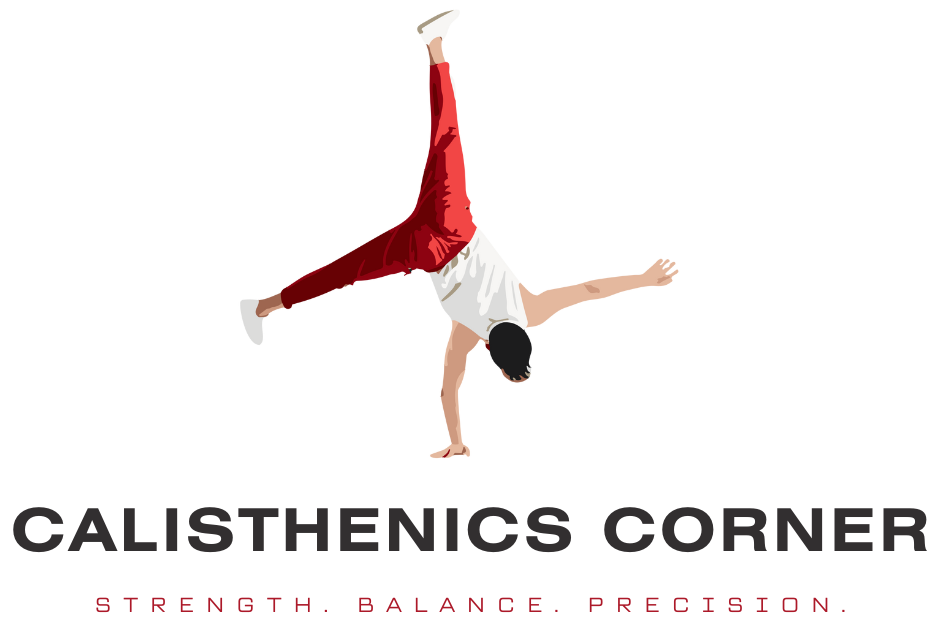Are you looking to build muscle and bulk up, but don’t have access to a gym or weights? Look no further than calisthenics! Calisthenics is a form of exercise that uses only your bodyweight to perform various movements and exercises. In this article, we will explore whether or not calisthenics is an effective way to gain muscle mass and achieve your bulking goals. Get ready to discover the secrets of bulking with calisthenics and unleash your full potential without the need for expensive equipment or heavy weights.
Can You Bulk With Calisthenics?
What is Calisthenics?
Calisthenics is a form of exercise that utilizes bodyweight movements to build strength, flexibility, and endurance. It is a versatile and functional training method that can be done anywhere, without the need for expensive equipment or a gym membership. Calisthenics exercises include push-ups, pull-ups, squats, lunges, planks, and many more.
Understanding Bulking
Bulking is a term commonly used in the fitness industry to describe a phase of training where the primary goal is to gain muscle mass and increase overall body size. During a bulking phase, individuals typically consume a surplus of calories to support muscle growth. This surplus, combined with weightlifting or resistance training, stimulates protein synthesis and leads to increases in muscle size and strength.
Benefits of Calisthenics for Bulking
Calisthenics can be an effective method for bulking, offering several benefits that make it a viable option for those looking to gain muscle mass. Firstly, calisthenics exercises engage multiple muscle groups simultaneously, allowing for efficient muscle growth and overall body development. Additionally, calisthenics promotes functional strength, as the exercises mimic natural movement patterns and develop core stability. Moreover, calisthenics workouts can be easily tailored to individual fitness levels and goals, making it suitable for beginners and advanced athletes alike.
Building Muscle Mass with Calisthenics
Progressive Overload Principle
Building muscle mass with calisthenics follows the same principles as traditional weightlifting: progressive overload. The progressive overload principle states that in order for muscles to grow, they must be consistently challenged by increasing the intensity, volume, or difficulty of the exercises. This can be achieved in calisthenics by gradually increasing the number of repetitions, sets, or adding variations to the exercises.
Calisthenics Exercises for Muscle Building
Calisthenics offers a wide range of exercises that target different muscle groups, making it possible to build muscle mass with bodyweight movements alone. Push-ups, for example, target the chest, triceps, and shoulders, while pull-ups engage the back and biceps. Squats and lunges work the lower body muscles, including the quads, hamstrings, and glutes. Incorporating exercises like dips, handstand push-ups, and pistol squats can further challenge the muscles and stimulate growth.
Importance of Proper Form and Technique
When building muscle mass with calisthenics, it is crucial to prioritize proper form and technique. Performing exercises with poor form not only increases the risk of injury but also diminishes the effectiveness of the movements. It is important to maintain a stable core, engage the appropriate muscles, and perform each exercise with control and full range of motion. Mastering the fundamental movements before progressing to advanced variations is key to gaining muscle mass safely and effectively.
Caloric Surplus: The Key to Bulking
Understanding Caloric Surplus
In order to build muscle mass, a caloric surplus is necessary. A caloric surplus means consuming more calories than your body burns on a daily basis. This provides the necessary energy and nutrients to support muscle growth and repair. It is generally recommended to aim for a surplus of 250-500 calories per day for a gradual and sustainable muscle gain.
Determining Caloric Needs for Bulking
Calculating your caloric needs for bulking involves taking into account factors such as your age, gender, weight, activity level, and goals. Online calculators can provide an estimate, but it is important to listen to your body and adjust accordingly. Regularly monitoring your weight and adjusting your caloric intake based on your progress will help ensure you are in the optimal surplus range for muscle growth.
Balancing Macronutrients for Muscle Growth
While a caloric surplus is important for bulking, it is equally important to focus on the quality of the calories consumed. Balancing macronutrients, such as protein, carbohydrates, and fats, is essential for muscle growth. Protein is especially important as it is the building block of muscles. Aim to consume around 1.6-2.2 grams of protein per kilogram of body weight. Carbohydrates provide energy for workouts and support muscle glycogen stores, while healthy fats aid in hormone production and overall health.
Nutrition for Calisthenics Bulking
Caloric Intake
When bulking with calisthenics, it is important to structure your meals and snacks to meet your caloric needs. Aim to spread your calories evenly throughout the day to provide a constant source of energy for your workouts and muscle recovery. Including nutrient-dense foods such as lean proteins, whole grains, fruits, vegetables, and healthy fats will help ensure you are fueling your body properly.
Protein Requirements
As mentioned earlier, protein is crucial for muscle growth. It is recommended to include a source of protein in each meal to meet your daily protein requirements. Good sources of protein for calisthenics bulking include lean meats, poultry, fish, eggs, dairy products, legumes, tofu, and protein supplements if needed.
Carbohydrate and Fat Intake
Carbohydrates are essential for providing energy during intense calisthenics workouts. Focus on consuming complex carbohydrates such as whole grains, fruits, and vegetables, which provide a steady release of energy. Healthy fats are also important for overall health and hormone production. Include sources of healthy fats such as avocados, nuts, seeds, olive oil, and fatty fish in your diet.
Importance of Hydration
Staying hydrated is often overlooked but is crucial for optimal muscle growth and overall performance. Aim to drink enough water throughout the day, especially before and during your workouts. Proper hydration helps transport nutrients to your muscles, supports muscle recovery, and helps maintain overall health.
Building Strength in Calisthenics
Progressive Calisthenics
Building strength in calisthenics involves gradually progressing from easier exercises to more challenging variations as you become stronger. This can be achieved by increasing the difficulty of the exercises through modifications such as adding resistance bands, elevating the feet or hands, and incorporating advanced movements like one-arm push-ups and pistol squats.
Training Frequency and Volume
To build strength with calisthenics, it is important to establish a consistent training routine. Aim for at least three to four workouts per week, allowing adequate rest days for muscle recovery and growth. The volume of your training, which refers to the number of sets and repetitions performed, should be progressively increased over time to continue challenging your muscles.
Importance of Rest and Recovery
Rest and recovery are essential components of any strength-building program, including calisthenics. It is during these periods of rest that muscles repair and grow. Allow yourself at least one or two rest days per week to prevent overtraining and give your muscles time to recover. Pay attention to your body’s signals and listen to any signs of fatigue or excessive soreness.
Tracking Progress and Adjusting
Tracking your progress is essential in calisthenics to ensure continuous improvement and prevent plateauing. Keep a workout journal or use a fitness app to record your exercises, sets, repetitions, and any modifications or progressions. By monitoring your progress, you can identify areas of improvement and make adjustments to your training routine as needed.
Incorporating Weighted Calisthenics
To further challenge yourself and stimulate muscle growth, consider incorporating weighted calisthenics into your routine. This can be achieved using weight vests, ankle weights, or resistance bands to add resistance to your bodyweight exercises. Gradually increase the weight or resistance over time to continue challenging your muscles and promoting strength gains.
Maximizing Muscle Growth with Calisthenics
Compound vs Isolation Exercises
In order to maximize muscle growth with calisthenics, it is important to include a combination of compound and isolation exercises in your workouts. Compound exercises, such as push-ups, pull-ups, and squats, engage multiple muscle groups at once and promote overall strength and muscle development. Isolation exercises, such as bicep curls and tricep extensions, target specific muscles and can be used to further develop individual muscle groups.
Targeting Different Muscle Groups
To ensure balanced muscle development, it is important to target all major muscle groups in your calisthenics workouts. This includes the chest, back, shoulders, arms, core, and lower body. Incorporate exercises that specifically target each muscle group, allowing for a well-rounded physique and overall functional strength.
Utilizing Advanced Calisthenics Techniques
As you progress in your calisthenics journey, consider incorporating advanced techniques into your workouts to further stimulate muscle growth. Techniques such as supersets, drop sets, pyramids, and isometric holds can add intensity and challenge to your exercises. Experiment with different variations and techniques to keep your workouts exciting and continue making progress.
The Role of Stretching and Flexibility
While building muscle mass is the primary goal of bulking with calisthenics, it is equally important to prioritize flexibility and mobility. Regular stretching and mobility exercises help maintain joint health, prevent muscle imbalances, and improve overall athletic performance. Incorporate dynamic stretches before workouts and static stretches after workouts to keep your muscles flexible and supple.
Challenges of Bulking with Calisthenics
Progression Plateaus
As with any training method, calisthenics can present progression plateaus where you may feel stuck or unable to make further gains. This can be frustrating, but it is important to remember that plateaus are a normal part of the muscle-building process. To overcome plateaus, try incorporating new exercises, modifying the intensity, or changing the rep ranges to continue challenging your muscles.
Limited Resistance
One of the challenges of bulking with calisthenics is the limited amount of resistance available when compared to weightlifting. While this can make it more difficult to achieve significant muscle gains, it does not make it impossible. By implementing progressive overload, focusing on proper form, and incorporating advanced calisthenics techniques, you can still build muscle mass effectively with bodyweight movements alone.
Injury Prevention
As with any form of exercise, there is always a risk of injury. In calisthenics, the risk is primarily associated with exercises that require a high degree of strength and stability, such as planche push-ups or muscle-ups. It is important to prioritize proper form, start with progressions suitable for your current strength level, and listen to your body to avoid overexertion and reduce the risk of injury. If you experience any pain or discomfort, consult with a healthcare professional.
Supplementing for Calisthenics Bulking
Protein and Amino Acid Supplements
Supplementing with protein and amino acids can be beneficial for those who struggle to meet their daily protein requirements through whole foods alone. Protein powders, such as whey or plant-based protein, can provide a convenient and easily digestible source of high-quality protein that supports muscle recovery and growth. Additionally, amino acid supplements, such as branched-chain amino acids (BCAAs), can aid in muscle repair and reduce muscle soreness.
Creatine for Strength and Size
Creatine is a naturally occurring compound in the body that plays a role in increasing anaerobic energy production. Supplementing with creatine has been shown to enhance strength, increase muscle mass, and improve workout performance. It is a popular supplement among athletes and can be beneficial for those looking to maximize their muscle growth potential in calisthenics.
Other Potential Supplements
While not necessary for everyone, there are other supplements that may be worth considering for bulking with calisthenics. These include omega-3 fatty acids for overall health and inflammation reduction, vitamin D for bone health and muscle function, and magnesium for muscle relaxation and recovery. Before incorporating any supplements, it is recommended to consult with a healthcare professional to ensure they align with your specific needs and goals.

Balancing Cardiovascular Training
Incorporating Cardio for General Fitness
Balancing cardiovascular training with calisthenics is important for overall health and fitness. Cardiovascular exercises, such as running, cycling, or swimming, help improve cardiovascular endurance, burn calories, and support overall heart health. Aim for at least 150 minutes of moderate-intensity cardio per week, or 75 minutes of vigorous-intensity cardio, in addition to your calisthenics workouts.
Managing Cardio to Avoid Muscle Loss
When focusing on bulking and building muscle mass with calisthenics, it is important to manage your cardio workouts to avoid excessive muscle loss. High-intensity cardio sessions, such as long-distance running or HIIT workouts, can potentially interfere with muscle recovery and hinder muscle growth. To minimize muscle loss, consider incorporating lower-intensity cardio exercises, such as brisk walking or steady-state cycling, and scheduling cardio workouts on separate days from your calisthenics training.
Realistic Expectations and Timeframe
Factors Affecting Bulking Progress
It is important to have realistic expectations and understand that the rate at which you can bulk with calisthenics will vary depending on several factors. These include your genetics, training intensity, consistency, nutrition, sleep quality, and overall health. Some individuals may see noticeable muscle gains within a few months, while others may take longer to achieve their desired results. Focus on progress rather than comparing yourself to others and trust in the process.
Setting Realistic Goals
Setting realistic and achievable goals is essential for successful bulking with calisthenics. Define your desired muscle mass, strength level, or specific skills you want to achieve. Break down your goals into smaller, attainable targets and celebrate each milestone along the way. By setting realistic goals and tracking your progress, you can stay motivated and committed to your calisthenics journey.
Patience and Consistency
Bulking with calisthenics requires patience and consistency. Muscle growth is a gradual process that takes time and commitment. Stick to your training routine, follow a well-balanced nutrition plan, prioritize rest and recovery, and trust in your body’s ability to adapt and grow. Keep a positive mindset, stay consistent with your workouts and nutrition, and the results will come.
In conclusion, bulking with calisthenics is not only possible but can also be an effective and enjoyable way to build muscle mass. By understanding the principles of progressive overload, focusing on proper form, nutrition, and supplementation, and incorporating advanced techniques, you can achieve your bulking goals with bodyweight exercises alone. Remember to set realistic expectations, stay consistent, and embrace the journey of calisthenics bulking. So, grab a pull-up bar, lace up your shoes, and get ready to bulk up with calisthenics!








